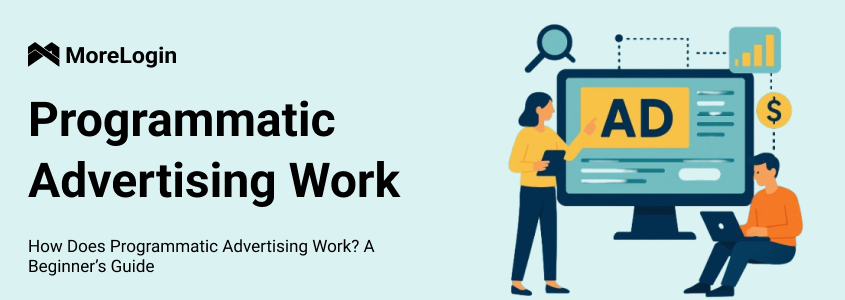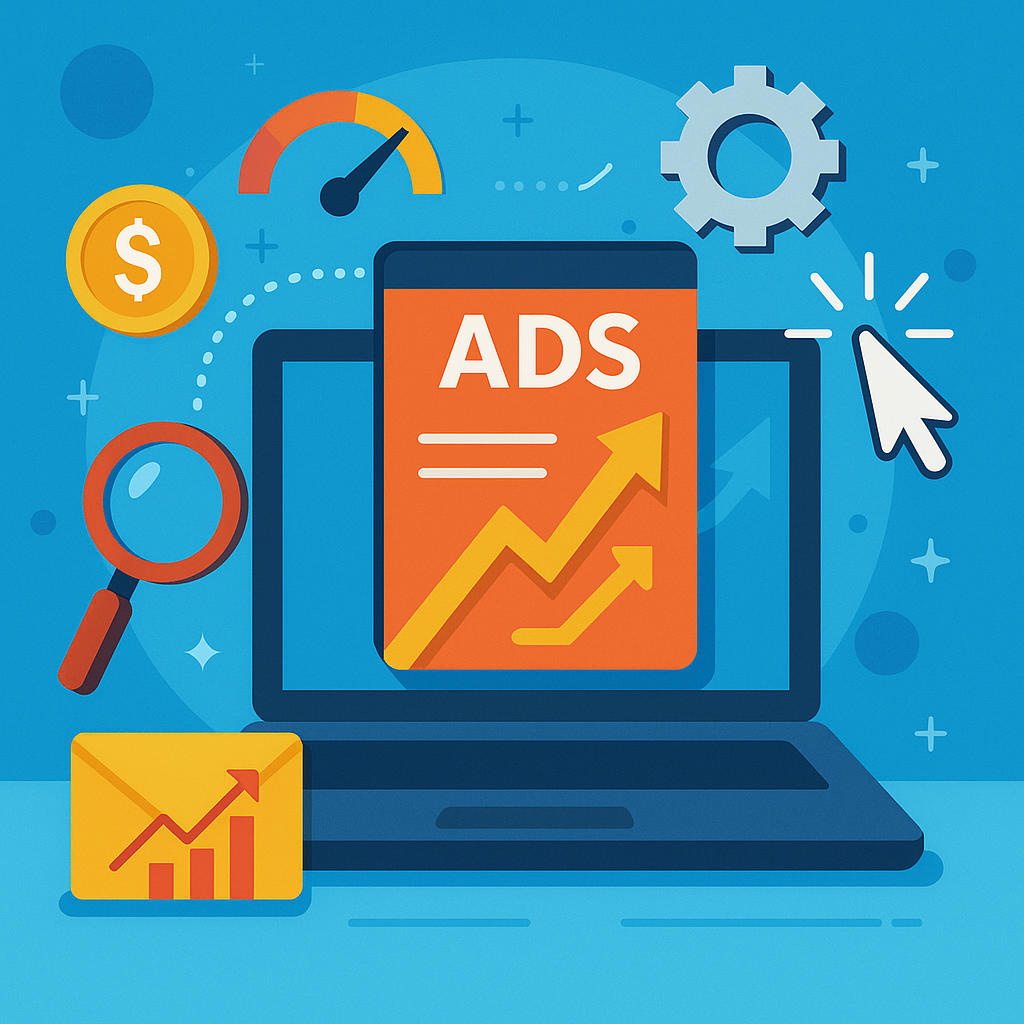
- Product

- Pricing
- Affiliate Program
- Use Cases
- Resource


Programmatic advertising automates the buying and placement of ads using data and algorithms. Compared to traditional manual negotiations and placements, it delivers ads more accurately to genuinely interested users, improving effectiveness and efficiency. The entire process relies on specialized platforms to handle the automated buying and selling of ad space. Advertisers purchase ads through Demand-Side Platforms (DSPs), while publishers sell inventory via Supply-Side Platforms (SSPs), with both sides connecting through digital marketplaces.
This technology enables precise targeting, enhances ad performance, and effectively addresses industry challenges such as ad fraud and privacy protection. As digital marketing evolves, programmatic advertising has become essential for businesses. This article explains how programmatic advertising works, its tools, key players, and challenges. So, what is programmatic advertising and how does it work?

To effectively utilize programmatic advertising, we must first understand how does programmatic advertising works. By comprehending its precise and efficient automated process for digital ad procurement, we can better employ and deploy programmatic advertising solutions. Let's examine the step-by-step journey of a single ad impression:
User Visits a Website/App
The process begins when a user opens a website or mobile application. Behind the scenes, the publisher's Supply-Side Platform (SSP) instantly identifies available ad space on the page. This technology automatically packages the advertising opportunity and sends it to an Ad Exchange, a digital marketplace where ads are bought and sold.
Real-Time Bidding (RTB) Begins
Now the race is on. The Ad Exchange fires up a blink-and-you'll miss-it auction. Imagine a room full of advertisers' robots (DSPs) frantically analyzing your digital footprint - what you've been browsing, where you're located, even that fitness app you used this morning. In milliseconds, they decide if you're their target and throw down bids. This is how programmatic advertising works its magic through these lightning-fast auctions.
Highest Bid Wins
Speed operation of programmatic advertising. The ad exchange compares all bids in real time and awards the ad space to the highest bidder. The winning advertiser's creative content is instantly displayed on the user's device, seamlessly integrating into the webpage.
Performance Tracking & Optimization
After an ad appears on screen, the system tracks how users interact with it. Every click, view, and conversion gets measured and analyzed. This performance data then flows back to the DSP.
Here's a real-world example showing how programmatic advertising actually works in practice. Take a running shoe company that wants to reach fitness fans. They use a DSP (that's the advertiser's buying tool) to find the right customers. Now, picture this: a runner checks out a sports news site. The moment that page loads, the website's selling system (called an SSP) alerts the ad marketplace.
Here's where it gets interesting. The shoe brand's system checks the runner's recent activity - maybe they've been using a running app regularly. Based on this, the shoe company automatically bids $3.50 for that ad spot, beating out other brands. Before the runner even finishes reading the headline, boom - there's an ad for trail running shoes staring back at them.
The real magic happens after the ad runs. If that runner clicks and buys, the system takes note: "This type of customer converts well." Next time someone similar comes along, the system will bid more aggressively to win that spot. But if certain types of users never click? The system quietly spends less on them over time. The whole process is like having an intelligent assistant to help you optimize your ad placement, with no human intervention at all.
This system learns continuously and automatically adjusts bidding strategies based on data about actual conversion results, not on guesswork or intuition. Websites show more relevant ads, advertisers get better placement results, and users see content they might be interested in. This is how programmatic advertising works.
For connected campaigns, how does programmatic advertising and programmatic tv advertising work? It uses specialized DSPs/SSPs optimized for content environments. Several platforms enable efficient programmatic ad buying:
Here are some additional optimization tools.
Google Analytics provides comprehensive campaign performance tracking and audience insights to measure ad effectiveness.
Heap offers automatic digital insights and user behavior analysis to optimize ad targeting strategies.
MoreLogin provides a specialized browser environment. It allows secure management of multiple ad accounts at the same time. The tool includes built-in synchronization features. These features keep settings consistent across all accounts. They also prevent the system from flagging the activity as duplicate traffic.. Its anti-association technology enables media buyers to efficiently manage multiple accounts without triggering platform security alerts.

These complementary tools help advertisers monitor, analyze, and optimize their programmatic campaigns more effectively. Each tool has a unique purpose. Google Analytics tracks performance data. Heap analyzes user behavior. MoreLogin improves operational efficiency. Marketers can choose the right solutions for their campaign goals.
Advertisers
Major brands and marketing agencies purchase digital advertising space to promote their products and services. Examples include global corporations like Nike and Coca-Cola, as well as direct-to-consumer brands.
Publishers
Digital media companies and content platforms that monetize their websites and mobile applications by selling advertising inventory. Leading publishers range from news organizations to social media platforms. Advertisers and publishers interact through platforms that power how programmatic advertising works, with data providers enhancing targeting precision.
Ad Exchanges
Technology platforms that serve as digital marketplaces connecting advertisers with publishers through real-time auctions. These exchanges facilitate the automated buying and selling of ad impressions at scale.
Data Providers
Specialized companies that collect, analyze, and provide audience data to help advertisers target their campaigns more effectively. These firms offer valuable consumer insights and segmentation capabilities.
Technology Providers
Companies that develop the software solutions powering programmatic advertising ecosystems. Their products include demand-side platforms, supply-side platforms, and various optimization tools that enable automated media transactions.
Data Privacy and Regulatory Compliance
Even with robust systems defining how programmatic advertising works, privacy regulations require adaptive solutions. Strict data protection regulations such as GDPR in Europe and CCPA in California have significantly limited traditional user tracking methods.
Recommended Solution: Marketers should prioritize collecting first-party data while adopting privacy-compliant contextual targeting approaches as alternatives to third-party cookies.
Advertising Fraud and Invalid Traffic
Sophisticated bot networks frequently generate fraudulent impressions and clicks, resulting in substantial wasted advertising budgets.
Recommended Solution: Industry-leading verification solutions, including Integral Ad Science and DoubleVerify, provide essential protection by identifying and filtering invalid traffic.
Platform Complexity and Fragmentation
The need to simultaneously manage multiple demand-side and supply-side platforms creates operational challenges for marketing teams.
Recommended Solution: Centralized trading desk solutions such as Marketin help consolidate and streamline cross-platform campaign management.
Brand Safety and Content Adjacency Risks
Programmatic placements sometimes appear alongside harmful or brand-damaging content without proper safeguards.
Recommended Solution: Advanced AI-powered content moderation systems like those developed by major media companies can effectively screen and block unsuitable placements.
This guide explains what programmatic advertising is and how it works through its automated ecosystem.
To realize the full potential of programmatic advertising, it is crucial to choose the right professional tools. And MoreLogin is a great choice. This specialized browser environment enables secure and efficient multi-account synchronization management. Whether it's multiplayer collaboration or large-scale ad operations, MoreLogin delivers reliability, allowing marketers to focus on strategic optimization rather than technical limitations.